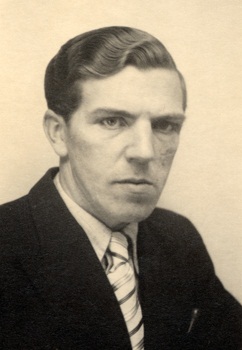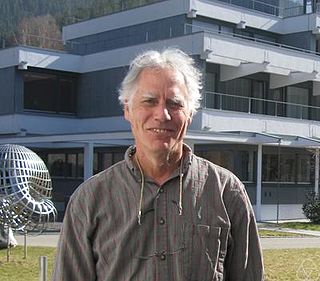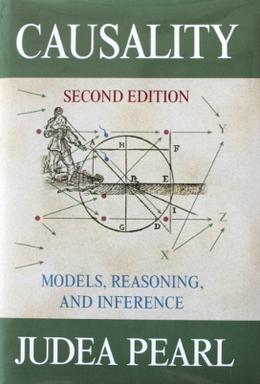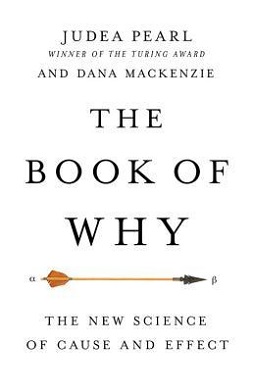Related Research Articles
Causality is an influence by which one event, process, state, or object (acause) contributes to the production of another event, process, state, or object (an effect) where the cause is partly responsible for the effect, and the effect is partly dependent on the cause. In general, a process has many causes, which are also said to be causal factors for it, and all lie in its past. An effect can in turn be a cause of, or causal factor for, many other effects, which all lie in its future. Some writers have held that causality is metaphysically prior to notions of time and space.
A Bayesian network is a probabilistic graphical model that represents a set of variables and their conditional dependencies via a directed acyclic graph (DAG). While it is one of several forms of causal notation, causal networks are special cases of Bayesian networks. Bayesian networks are ideal for taking an event that occurred and predicting the likelihood that any one of several possible known causes was the contributing factor. For example, a Bayesian network could represent the probabilistic relationships between diseases and symptoms. Given symptoms, the network can be used to compute the probabilities of the presence of various diseases.

In artificial intelligence, symbolic artificial intelligence is the term for the collection of all methods in artificial intelligence research that are based on high-level symbolic (human-readable) representations of problems, logic and search. Symbolic AI used tools such as logic programming, production rules, semantic nets and frames, and it developed applications such as knowledge-based systems, symbolic mathematics, automated theorem provers, ontologies, the semantic web, and automated planning and scheduling systems. The Symbolic AI paradigm led to seminal ideas in search, symbolic programming languages, agents, multi-agent systems, the semantic web, and the strengths and limitations of formal knowledge and reasoning systems.

Judea Pearl is an Israeli-American computer scientist and philosopher, best known for championing the probabilistic approach to artificial intelligence and the development of Bayesian networks. He is also credited for developing a theory of causal and counterfactual inference based on structural models. In 2011, the Association for Computing Machinery (ACM) awarded Pearl with the Turing Award, the highest distinction in computer science, "for fundamental contributions to artificial intelligence through the development of a calculus for probabilistic and causal reasoning". He is the author of several books, including the technical Causality: Models, Reasoning and Inference, and The Book of Why, a book on causality aimed at the general public.

Trygve Magnus Haavelmo, born in Skedsmo, Norway, was an economist whose research interests centered on econometrics. He received the Nobel Memorial Prize in Economic Sciences in 1989.
Vasant G. Honavar is an Indian-American computer scientist, and artificial intelligence, machine learning, big data, data science, causal inference, knowledge representation, bioinformatics and health informatics researcher and professor.
The following outline is provided as an overview of and topical guide to artificial intelligence:

In the philosophy of science, a causal model is a conceptual model that describes the causal mechanisms of a system. Several types of causal notation may be used in the development of a causal model. Causal models can improve study designs by providing clear rules for deciding which independent variables need to be included/controlled for.

James M. Robins is an epidemiologist and biostatistician best known for advancing methods for drawing causal inferences from complex observational studies and randomized trials, particularly those in which the treatment varies with time. He is the 2013 recipient of the Nathan Mantel Award for lifetime achievement in statistics and epidemiology, and a recipient of the 2022 Rousseeuw Prize in Statistics, jointly with Miguel Hernán, Eric Tchetgen-Tchetgen, Andrea Rotnitzky and Thomas Richardson.
Causal reasoning is the process of identifying causality: the relationship between a cause and its effect. The study of causality extends from ancient philosophy to contemporary neuropsychology; assumptions about the nature of causality may be shown to be functions of a previous event preceding a later one. The first known protoscientific study of cause and effect occurred in Aristotle's Physics. Causal inference is an example of causal reasoning.
Causal analysis is the field of experimental design and statistics pertaining to establishing cause and effect. Typically it involves establishing four elements: correlation, sequence in time, a plausible physical or information-theoretical mechanism for an observed effect to follow from a possible cause, and eliminating the possibility of common and alternative ("special") causes. Such analysis usually involves one or more artificial or natural experiments.
Joshua Brett Tenenbaum is Professor of Computational Cognitive Science at the Massachusetts Institute of Technology. He is known for contributions to mathematical psychology and Bayesian cognitive science. According to the MacArthur Foundation, which named him a MacArthur Fellow in 2019, "Tenenbaum is one of the first to develop and apply probabilistic and statistical modeling to the study of human learning, reasoning, and perception, and to show how these models can explain a fundamental challenge of cognition: how our minds understand so much from so little, so quickly."
Causal inference is the process of determining the independent, actual effect of a particular phenomenon that is a component of a larger system. The main difference between causal inference and inference of association is that causal inference analyzes the response of an effect variable when a cause of the effect variable is changed. The study of why things occur is called etiology, and can be described using the language of scientific causal notation. Causal inference is said to provide the evidence of causality theorized by causal reasoning.
In statistics, econometrics, epidemiology, genetics and related disciplines, causal graphs are probabilistic graphical models used to encode assumptions about the data-generating process.
This glossary of artificial intelligence is a list of definitions of terms and concepts relevant to the study of artificial intelligence, its sub-disciplines, and related fields. Related glossaries include Glossary of computer science, Glossary of robotics, and Glossary of machine vision.

Causality: Models, Reasoning, and Inference is a book by Judea Pearl. It is an exposition and analysis of causality. It is considered to have been instrumental in laying the foundations of the modern debate on causal inference in several fields including statistics, computer science and epidemiology. In this book, Pearl espouses the Structural Causal Model (SCM) that uses structural equation modeling. This model is a competing viewpoint to the Rubin causal model. Some of the material from the book was reintroduced in the more general-audience targeting The Book of Why.

Richard Eugene Neapolitan was an American scientist. Neapolitan is most well-known for his role in establishing the use of probability theory in artificial intelligence and in the development of the field Bayesian networks.
Causal analysis is the field of experimental design and statistical analysis pertaining to establishing cause and effect. Exploratory causal analysis (ECA), also known as data causality or causal discovery is the use of statistical algorithms to infer associations in observed data sets that are potentially causal under strict assumptions. ECA is a type of causal inference distinct from causal modeling and treatment effects in randomized controlled trials. It is exploratory research usually preceding more formal causal research in the same way exploratory data analysis often precedes statistical hypothesis testing in data analysis
Song-Chun Zhu is a Chinese computer scientist and applied mathematician known for his work in computer vision, cognitive artificial intelligence and robotics. Zhu currently works at Peking University and was previously a professor in the Departments of Statistics and Computer Science at the University of California, Los Angeles. Zhu also previously served as Director of the UCLA Center for Vision, Cognition, Learning and Autonomy (VCLA).

The Book of Why: The New Science of Cause and Effect is a 2018 nonfiction book by computer scientist Judea Pearl and writer Dana Mackenzie. The book explores the subject of causality and causal inference from statistical and philosophical points of view for a general audience.
References
- ↑ Blogger, SwissCognitive Guest (18 January 2022). "Causal AI". SwissCognitive, World-Leading AI Network. Retrieved 11 October 2022.
- ↑ Sgaier, Sema K; Huang, Vincent; Grace, Charles (2020). "The Case for Causal AI". Stanford Social Innovation Review . 18 (3): 50–55. ISSN 1542-7099. ProQuest 2406979616.
- ↑ Shekhar, Gaurav (26 May 2022). "Causal AI — Enabling Data Driven Decisions". Medium. Retrieved 11 October 2022.
- ↑ "How to Understand the World of Causality | causaLens". causalens.com. 28 February 2023. Retrieved 7 October 2023.
- ↑ "Robust agents learn causal world models" . Retrieved 31 March 2024.
- ↑ Pearl, Judea (2019). The book of why : the new science of cause and effect. Dana Mackenzie. London, UK: Penguin Books. ISBN 978-0-14-198241-0. OCLC 1047822662.
- ↑ Hartnett, Kevin (15 May 2018). "To Build Truly Intelligent Machines, Teach Them Cause and Effect". Quanta Magazine. Retrieved 11 October 2022.
- ↑ "What AI still can't do". MIT Technology Review. Retrieved 18 October 2022.
- ↑ "What is New in the 2022 Gartner Hype Cycle for Emerging Technologies". Gartner. Retrieved 11 October 2022.
- ↑ Sharma, Shubham (10 August 2022). "Gartner picks emerging technologies that can drive differentiation for enterprises". VentureBeat. Retrieved 11 October 2022.